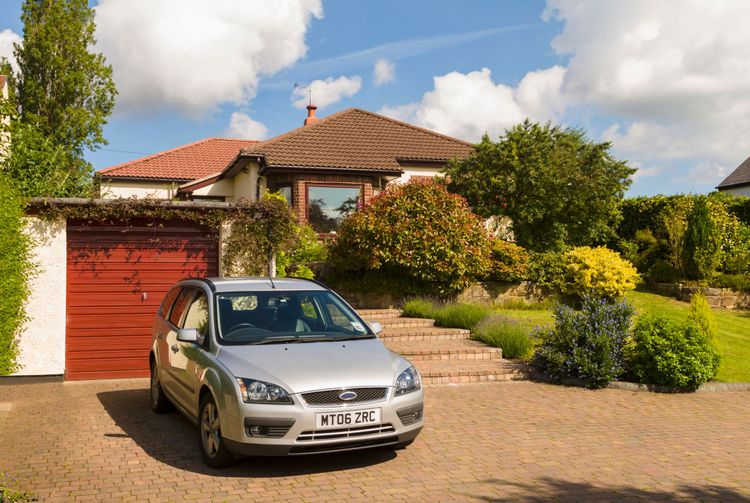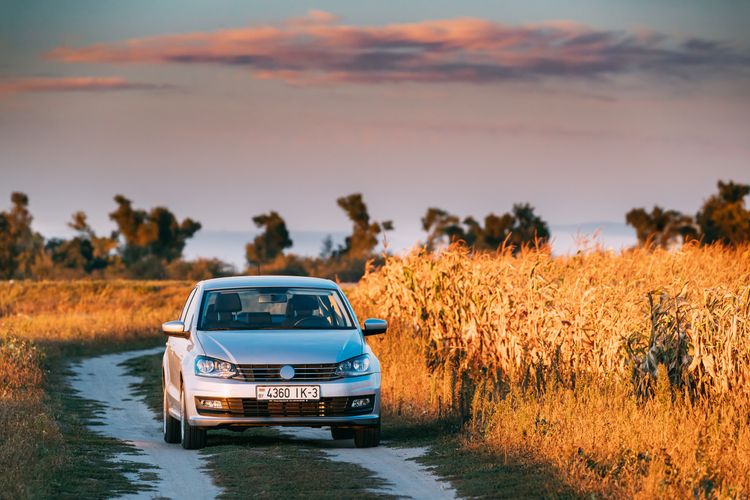Types Of Roads and Lane System In India : Explained
India’s vast and intricate road network is vital in connecting its diverse population, cities, towns and villages across the country. Understanding the various types of roads and their lane system is essential to navigate the country's bustling streets and highways effectively.
This article will delve into the different road construction types, their unique characteristics and the lane systems that regulate traffic flow within them. By gaining a comprehensive understanding of these road networks, you can enhance your driving experience and contribute to the overall safety and efficiency of the country’s road infrastructure.
Share this article
Protect Your Ride with the Best Car Insurance Plans
Believe it or Not! Save upto* 75% on TATA AIG Car Insurance
List of Content
- Different Types of Roads
- Different Types of Lane Systems in India
- Road Barrier Types in India
- Road Marking Types in India
- Conclusion
- Importance of Motor Insurance
Different Types of Roads
India’s extensive road network, the second largest globally, plays a crucial role in the country’s infrastructure. The road classification system in India categorises types of roads based on their location, utility and materials.
There are seven main types of roads, each serving a specific purpose:
-National Highways
National highways are an integral part of the road infrastructure in India. These are some of the best at-grade road construction types that connect major cities across India. Managed by the National Highways Authority of India (NHAI), they are often constructed in single, double, four, six and eight-lane configurations, ensuring smooth travel between cities.
-Expressways
Expressways are controlled-access highways that are designed for high-speed travel with restricted entry and exit points. They enhance the efficiency of long-distance travel and reduce congestion on national highways, helping maintain conduct on the roads in India.
-State Highways
State highways connect cities and towns within a state and are maintained by the respective state governments. They serve as essential routes for intercity travel and link state economies with national markets.
-District Roads
District roads facilitate local transportation within districts and connect rural areas to urban centres. They are crucial for the economic integration of rural populations by providing access to nearby markets and services.
-Village Roads
Providing connectivity within rural areas, village roads link villages to district roads or state highways. They are vital for the social and economic development of remote communities by enabling the movement of goods and people.
-Border Roads
Border roads run along India’s borders and are maintained by the Border Roads Organisation (BRO). They are essential for national defence and security, ensuring military and civilian access to remote border areas.
-International Highways
Connecting India with neighbouring countries, international highways facilitate international trade and travel. They play a key role in fostering regional cooperation and economic integration with neighbouring nations.
Different Types of Lane Systems in India
The lane systems in India are an essential aspect of road infrastructure, designed to manage traffic efficiently and enhance road safety. These systems are categorised based on the number of lanes and the type of traffic flow they accommodate.
-Single Lane System
Commonly found in rural areas and hilly terrains, the single-lane system has just one lane for each direction of travel. Vehicles must move cautiously as there is limited space for overtaking and traffic moves in opposite directions without a divider.
-Two Lane System
This system includes two lanes, one for each direction of travel. Typically seen on highways connecting towns and cities, these roads have centreline markings to separate traffic. Overtaking is allowed when visibility permits, making the two lane system a step up from single-lane roads.
-Three Lane System
This system consists of three lanes and is used on highways and roads with moderate traffic. One lane is for slow-moving vehicles, one is for regular traffic and one is for overtaking. Lane discipline is crucial in this system to ensure smooth traffic flow and indicators must be used when switching lanes.
-Four Lane System
Widely implemented on busy highways and expressways, the four-lane system provides two lanes in each direction and is separated by a median or road barrier. The outer lanes are for overtaking, while the inner lanes accommodate regular traffic. This setup enhances safety and traffic efficiency.
-Multi Lane System
Found on major highways and expressways, the multi-lane system comprises multiple lanes in each direction. These lanes are marked and drivers follow clear lane discipline for smooth traffic flow.
-Roundabout System
This system is a circular intersection where vehicles move clockwise around a central island, yielding to traffic already in the roundabout. It reduces the need for traffic signals in urban areas.
-Grade Separated System
This advanced system involves flyovers, underpasses and overpasses, designed to avoid intersections. It enables smoother traffic flow, reducing congestion and is commonly used on busy highways.
Road Barrier Types in India
Road barriers play an essential role in ensuring safety and managing traffic flow on various types of roads and lane systems. Depending on the lane system and road type, different kinds of barriers are used to meet specific safety requirements.
Here are some of the most commonly used road barriers in India:
-Wire-Rope Barriers
Wire-rope barriers are often used along the sidelines of highways and multi-lane roads to prevent vehicles from veering off. Made of steel cables supported by vertical posts, wire-rope barriers offer both visibility and lower maintenance costs.
-A-Frame Barriers
Primarily used in low-traffic or temporary construction zones, A-frame barriers consist of a horizontal board mounted on A-shaped legs. Their lightweight structure makes them ideal for crowd control or school zones. However, these barriers are not suitable for high-speed traffic areas.
-Delineator Tubes
These tall, neon-coloured tubes are used in areas with low visibility or tight spaces. They serve as warnings to drivers, indicating dangers or marking temporary lanes without fully blocking the road.
-Concrete Barriers
Known for their durability, concrete barriers are commonly used in major highway and expressway projects. However, their weight and grey colour make them less flexible and less visible than other types.
Road Marking Types in India
Road markings guide drivers, provide essential road information and help maintain order on busy roads. From delineating lanes to indicating pedestrian crossings, road markings play an integral role in keeping everyone on the road safe.
In India, road markings are regulated by the Indian Roads Congress (IRC) and are categorised based on their specific functions:
-Centre Lines
These markings divide two-way traffic and are crucial for guiding drivers to stay in their lane. White centre lines are used on single-lane, while yellow centre lines are used on multi-lane roads.
-Edge Lines
Edge lines are marked on the sides of the road to indicate the boundary of the roadway. They help drivers maintain their position, especially in low-light conditions.
-Lane Lines
These lines divide lanes of traffic. In India, yellow lane lines signal a ‘no-overtaking zone,’ while white lane lines mark regular lanes.
-Stop Lines
Painted in white, these markings indicate where vehicles must stop at traffic signals or junctions, helping regulate traffic flow.
-Zebra Crossings
These back and white striped markings signify pedestrian crossings, ensuring the safety of those walking across the road.
-Parking Markings
These white lines designate parking areas, promoting orderly parking and reducing road congestion.
Conclusion
India’s intricate road network is a vital component of its infrastructure. Understanding the various types of roads, lane systems, barriers and markings is essential for ensuring smooth transportation and safety across the country.
From national highways to village roads, each type of road serves a specific purpose in connecting people, regions and nations. By familiarising yourself with the different road classifications and details of the road infrastructure,
you can enhance your driving experience and contribute to the overall safety and efficiency of India’s road network.
Importance of Motor Insurance
Motor insurance plays a critical role in ensuring road safety and financial protection. Whether you are driving through busy urban streets or rural lanes, it provides coverage against unforeseen damages caused by road incidents. A reliable car insurance policy not only safeguards your vehicle but also offers peace of mind during travel.
TATA AIG’s four-wheeler insurance policies offer comprehensive protection, covering everything from theft and accidents to damages caused by natural and man-made disasters. Our policies also include third-party liability coverage, ensuring that any legal or financial responsibilities arising from accidents are taken care of. Additionally, TATA AIG provides personal accident cover for the owner-driver, enhancing safety on the road.
If you are looking to customise your cover, TATA AIG offers 17 car insurance add-ons such as Engine Secure and Zero Depreciation cover. You can use our free car insurance calculator to calculate your premium to choose the best-suited policy for your needs. Whether it is protecting your car in transit or adding roadside assistance, TATA AIG’s four-wheeler insurance policies are designed to provide a robust safety net for your precious vehicle.
Protect Your Ride with the Best Car Insurance Plans
Believe it or Not! Save upto* 75% on TATA AIG Car Insurance
People also search for
Key Insurance term
Share this article
Latest from our blogs

Zero Depreciation Car Insurance Cover
zero depreciation / depreciation reimbursement cover reimbur...
Read More
What is Insured declared value (IDV)?
The term ‘IDV’ refers to the maximum claim your insurer will...
Read More
How is your car insurance premium calculated?
Well it’s about time that changed, don’t you think? Read on ...
Read More